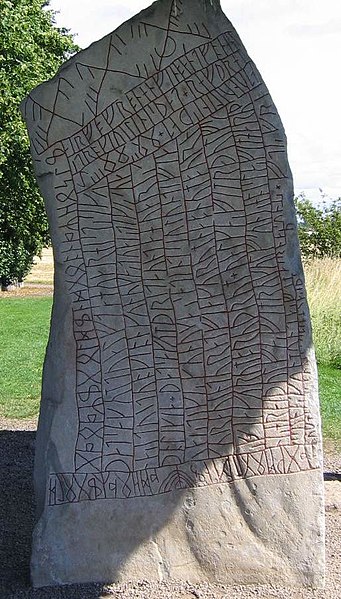Vinland, Vineland, or Winland was an area of coastal North America explored by Vikings. Leif Eriksson landed there around 1000 AD, nearly five centuries before the voyages of Christopher Columbus and John Cabot. The name appears in the Vinland Sagas, and describes Newfoundland and the Gulf of Saint Lawrence as far as northeastern New Brunswick. Much of the geographical content of the sagas corresponds to present-day knowledge of transatlantic travel and North America.
Recreated Norse long house, L'Anse aux Meadows, Newfoundland and Labrador, Canada. The site was listed by UNESCO as a World Heritage Site in 1978.
The beginning of the Saga of Erik the Red (13th-century manuscript)
Church of Hvalsey, one of the best preserved remnants from the Norse settlement in Greenland.
Leif Ericson U.S. commemorative stamp, issued 1968
Old Norse, Old Nordic, or Old Scandinavian is a stage of development of North Germanic dialects before their final divergence into separate Nordic languages. Old Norse was spoken by inhabitants of Scandinavia and their overseas settlements and chronologically coincides with the Viking Age, the Christianization of Scandinavia and the consolidation of Scandinavian kingdoms from about the 8th to the 15th centuries.
The Rök runestone in Östergötland, Sweden, is the longest surviving source of early Old East Norse. It is inscribed on both sides.





